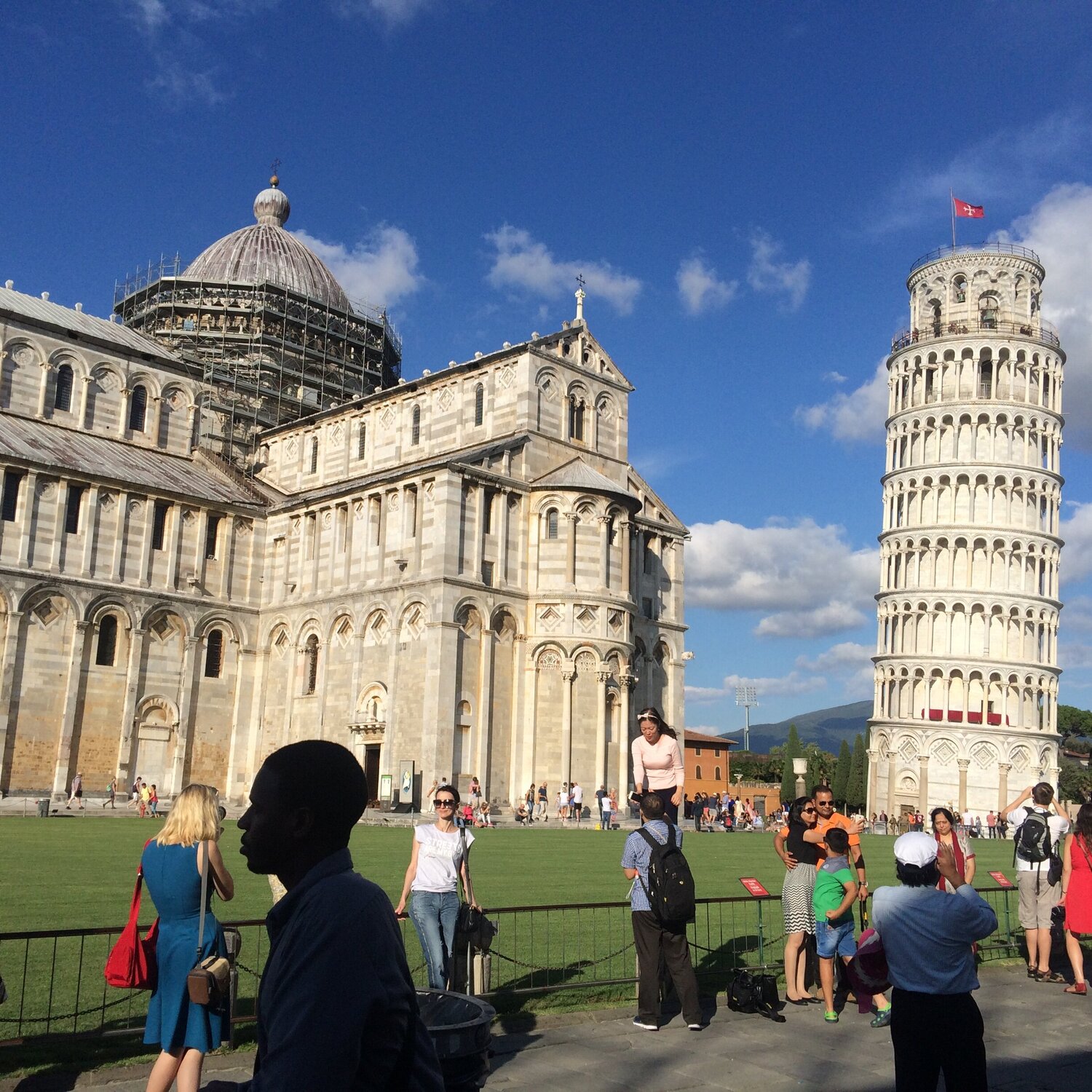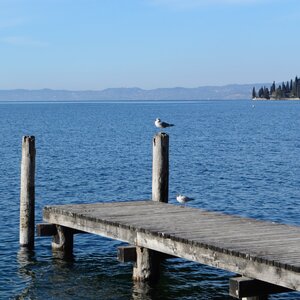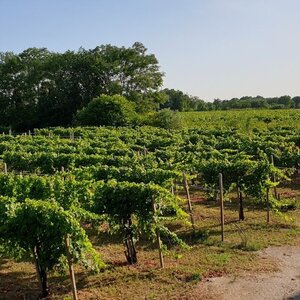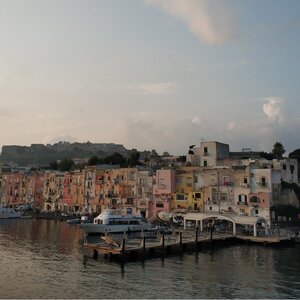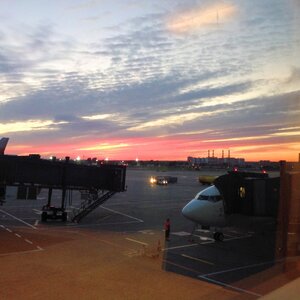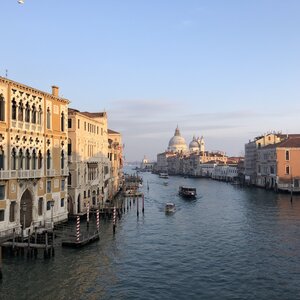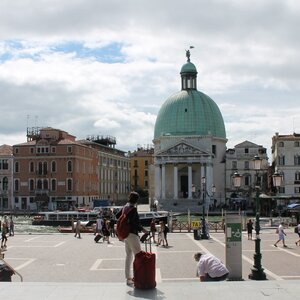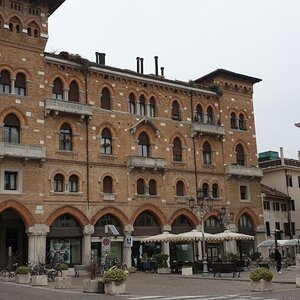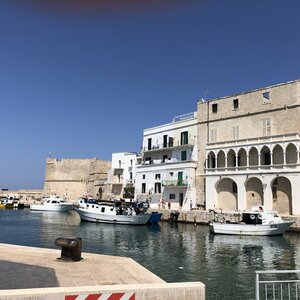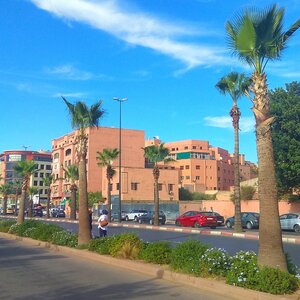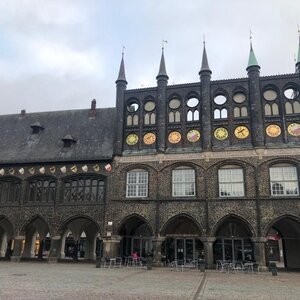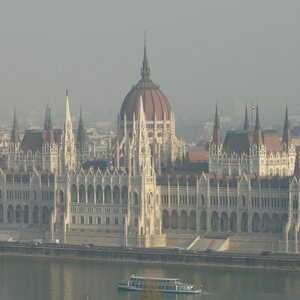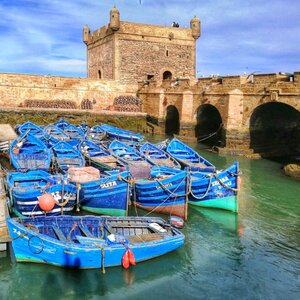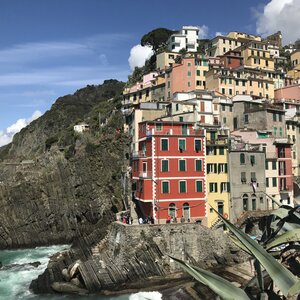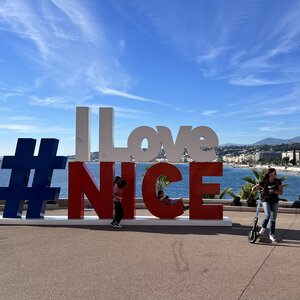We were in Pisa for almost two days. That’s a bit much for Pisa if the goal is to see the main postcard sights that everyone goes here for. The city is compact, the train station is a half hour walk from the main sights. Perfect conditions for relaxed sightseeing. A half day is enough to see the Leaning Tower of Pisa and the city center. On the second day you can see the places where tourists don’t go: what you can do on the second day in Pisa.
The Pisa Centrale train station is extremely well located relative to the center: 2 km to the main attraction on foot along a straight touristy pedestrian street fly by. Right in front of the station, the road leads to Piazza Vittorio Emanuele II, where the offices of the provincial administration and the main post office are located, from where we traditionally sent a postcard home.
There are always military police (Esercito) on duty in the square. We have seen such cars all over Italy in the main squares and tourist sites. The facade of the post office peeks behind the car.
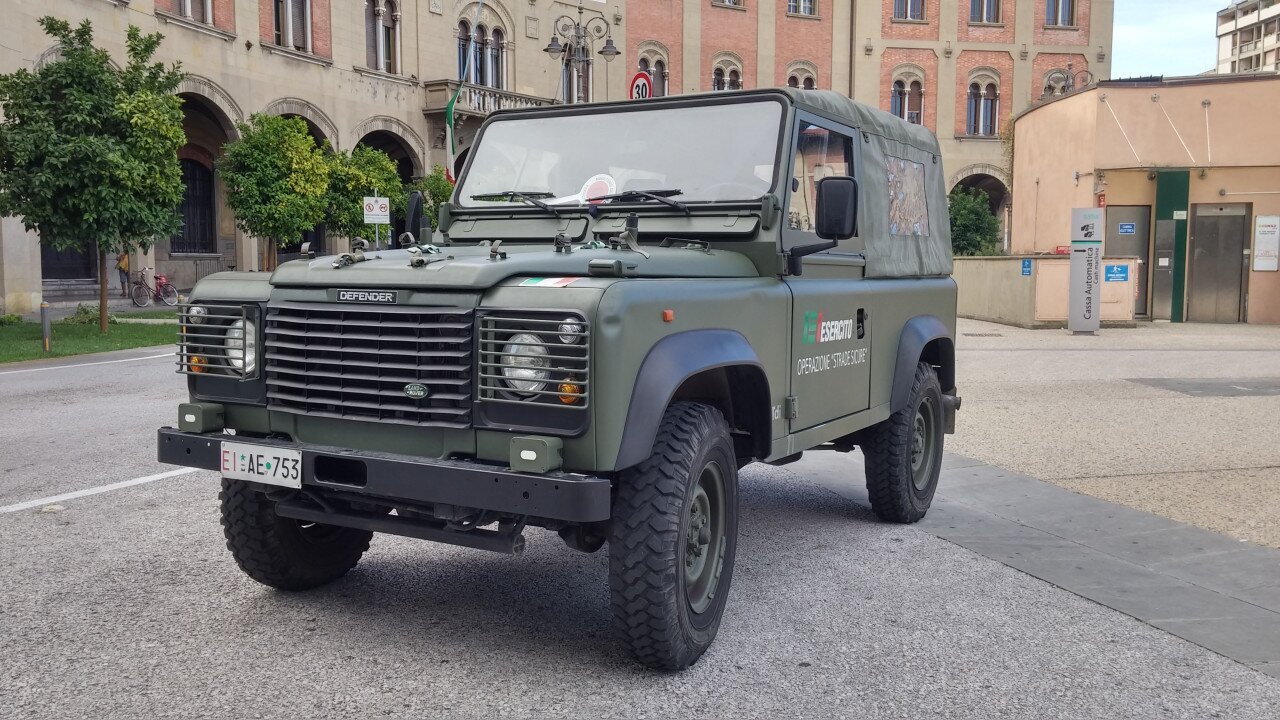
Just beyond the square begins the Corso Italia, Pisa’s main promenade. From this bustling, crowded street with its many stores and tourist attractions, dozens of small streets, alleys and anonymous back alleys branch off into dozens of hidden restaurants and shops that are definitely worth a look if you have a couple of hours to spare before your train.
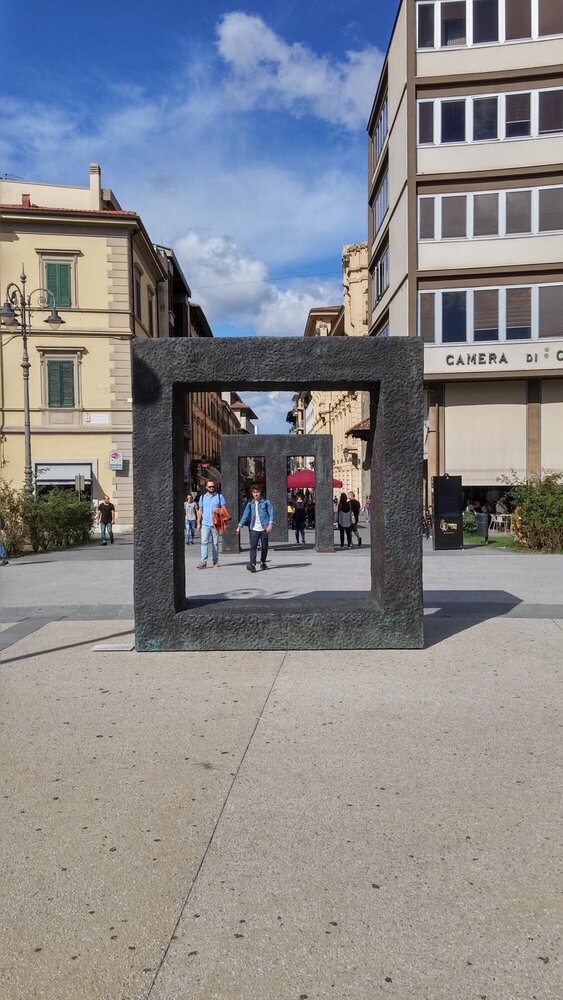
Street artists paint real masterpieces on asphalt with the shortest life cycle in history, doomed to be literally wiped off the face of the earth at the end of the day.
Leading between the stores and restaurants on the first floors of old, many times rebuilt palazzos, Corso Italia leads to the Ponte di Mezzo and the Arno riverfront, which divides the city into two roughly equal neighborhoods: Tramontana to the north and Mezzogiorno to the south. To the right stands the former government palace Palazzo Pretorio with its clock tower, which now houses the city library, and to the left the massive columns of the former Logge de Banchi market (built between 1603 and 1605), where silks, wool and grain were sold.


At the bridge we were able to exhale quietly for the first time in Pisa — all the way from the train station to the bridge we had to wade through crowds of people. Pisa in late September is very crowded. The main sights of the city are in the Piazza del Miracle, so, without wasting time, we cross the bridge, on the way we greet Garibaldi (the same as in all Italian cities, but horseless) and along Borgo Stretto we go deep into the medieval center of Pisa. And on the way we turn to the Cavalry Square and realize that the guidebook has deceived us again.
Piazza dei Cavalieri (Cavalry Square)
One of the most beautiful squares in Pisa remained a bit in the shadows during our visit: we took a video and not a single photo. Our guidebook mentioned it in passing.
The Piazza della Cavalleria (Knights' Square), a witness to Pisa’s former power, reminds tourists and Pisans alike that it was once a leading Mediterranean power, along with Genoa, Venice and Amalfi. Even after the conquest of Tuscany, Pisa remained the main Tuscan maritime city, and it is no coincidence that Duke Cosimo I de' Medici founded the Order of the Holy Great Martyr Pope Stephen here, an order whose mission was to protect the Mediterranean from Muslim pirates and to free Christian prisoners.
The Order was important to Cosimo I for political reasons: the fight against foreigners helped Tuscany to establish itself among the leading European powers and receive from the Pope the prestigious status of the Grand Duchy. To be knights of the highest Tuscan knightly order could be nobles of at least the fourth generation. It was impossible to place such an important Order in old, non-status buildings, and the brilliant Giorgio Vasari was invited to create the Piazza della Cavalleria. According to his design, old chaotic buildings of different times and styles were given a new life, a new look and new meanings.
The Palazzo dei Cavalieri (Palazzo dei Cavalieri; Palazzo della Carovana) is the dominant feature of Piazza Cavalieri (Knights' Square). It attracts the eye from whichever side you enter the square. The painted facade of the palace was created in the second half of the 16th century according to Vasari’s own sketches. The central coat of arms of the Medici and the Order of St. Stephen with allegorical figures of Faith and Justice belongs to the hand of Steldo Lorenzo and was executed in the same XVI century. The busts of the Archdukes in the niches were executed at different times, and the last two were created by Giovani Battista Foggini in the XVII–XVIII centuries. The massive yet graceful figure in front of the Palace is Cosimo I de' Medici himself, the first Grand Master of the Order of St. Stephen. His statue and fountain were commissioned by his son. Four hundred years ago, this palace was the home of the Knights Navigators, the «face» and prestige of Pisa. It is probably no coincidence that today the building houses Italy’s most prestigious higher education institution, the École Normale Supérieure.
The church of the Order of St. Stephen (chiesa dei Cavalieri di Santo Stefano) to the right of the palace is also a Vasari creation. The church, like the other buildings in the square, bears the eight-pointed red Maltese cross, the sign of the Order. It is said that the church still holds the trophies won by the knights on their sea voyages. We did not manage to get inside: when we walked through the square, the church was closed.
To the left of the palace is another striking building that looks like an open book: the Palazzo dell’Orologio (Palace of the Clock). The palace took its present form between 1605 and 1608, also designed by Vasari, who combined two towers standing at an angle to each other with an arch and a superstructure above it. If you look closely at the left side of the palace, you will see the clear outline of an older tower: the Tower of Hunger, in which, at the end of the 13th century, the former ruler of the city, Count Ugolino della Gherardesca, and his offspring, immortalized in Dante’s Divine Comedy, were starved to death for betraying the Republic. From the XVII century the Palace was the reception room of the Hospital of the Order. After the dissolution of the Order in the middle of the XIX century, the buildings went to other owners. In 1919 the Palace of the Hours was bought by a descendant of Count Gherardeschi, who added a four-segmented pseudo-Gothic window, and closer to the 1980s, when the palace was taken over by the Higher Normal School, a library was built there.
But all this we didn’t know yet. Our Lonely Planet guidebook had listed Cavalry Square as one of the interesting youth spots, a cluster of students and good student cafes nearby. We didn’t find any cafes in the square, marveled at the Maltese crosses on the facades, listened to a street musician and moved on.
Church of St. Sixtus (Chiesa di San Sisto), former patron saint of Pisa
From Piazza Cavalleria we went out via Corsica, which is to the left of the Palace of the Clock, and just beyond the square we found a church of gray-brown stones, very, very old looking. It turned out to be the church of St. Sixtus (San Sisto in Italian) and it was open. It was impossible not to go in.
Old churches that have undergone minimal transformations in the course of their history look a little creepy today. The Church of St. Sixtus, like most churches, has been modernized several times since its construction in the eleventh century, but was returned to its original appearance in the twentieth century. A simple Romanesque church, built of stone and cement, with a minimum of decoration inside and outside, with dim lighting and ancient, unsightly relics surprises the modern traveler with its asceticism and age. This is not given to luxurious museum churches, which dazzle with opulence; nor is it given to utilitarian modern churches. In an ancient, austere religious building, God does not appear kind and understanding, but strict and ruthless, seeing everything and forgiving nothing. It takes only 5 minutes here to feel the power of history on your shoulders, to realize your insignificance, to understand the doom and futility of your life, to be frightened by the fear that comes with it and to escape as soon as possible into the daylight, into the arms of today’s world, which now seems so calm and welcoming.
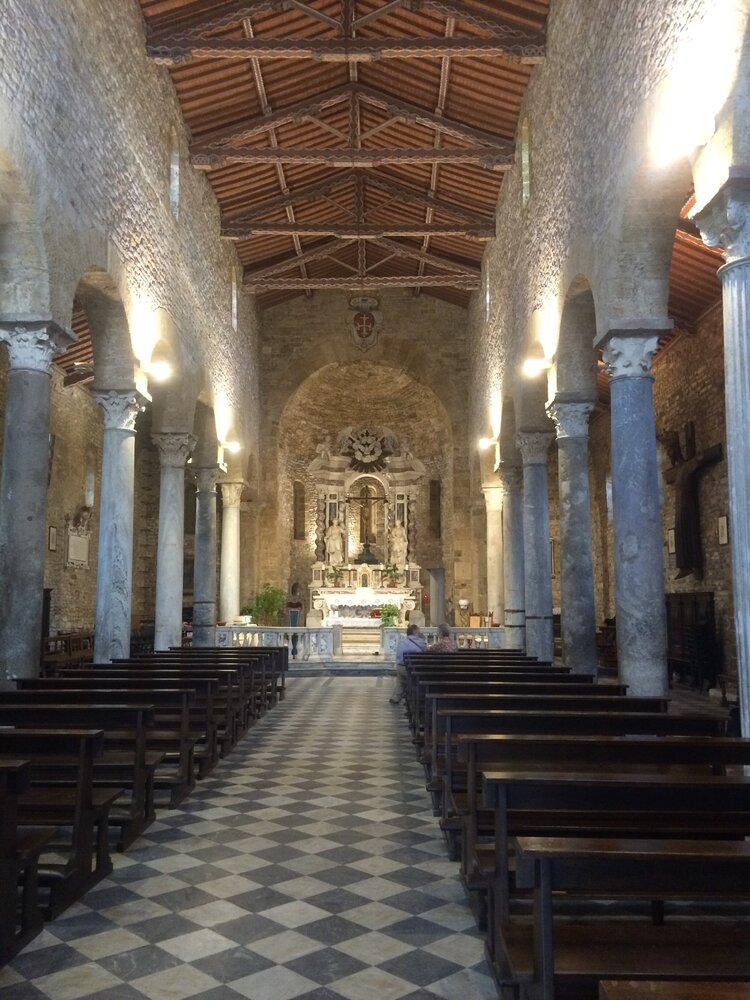
Columns from ruined Roman buildings were used to build the church. The church houses a polychrome wooden crucifix from the 14th century, a real galley rudder, a copy of a 14th century Madona painting and an Arab grave stone brought back from sea voyages. The marble polychrome altar dates from the 18th century and looks more welcoming and familiar to modern man, while the dark, not very delicately executed wooden crucifix is a bit intimidating.
St. Sixtus was once considered the patron saint of Pisa. On his feast day, August 6, Pisa won several significant naval victories. And on the same day Pisa suffered its most crushing defeat, after which the holiday was no longer celebrated, and the patron was «demoted». Nowadays, August 6 in Pisa celebrates the day of all citizens who died in all wars, a special service is held in the church.
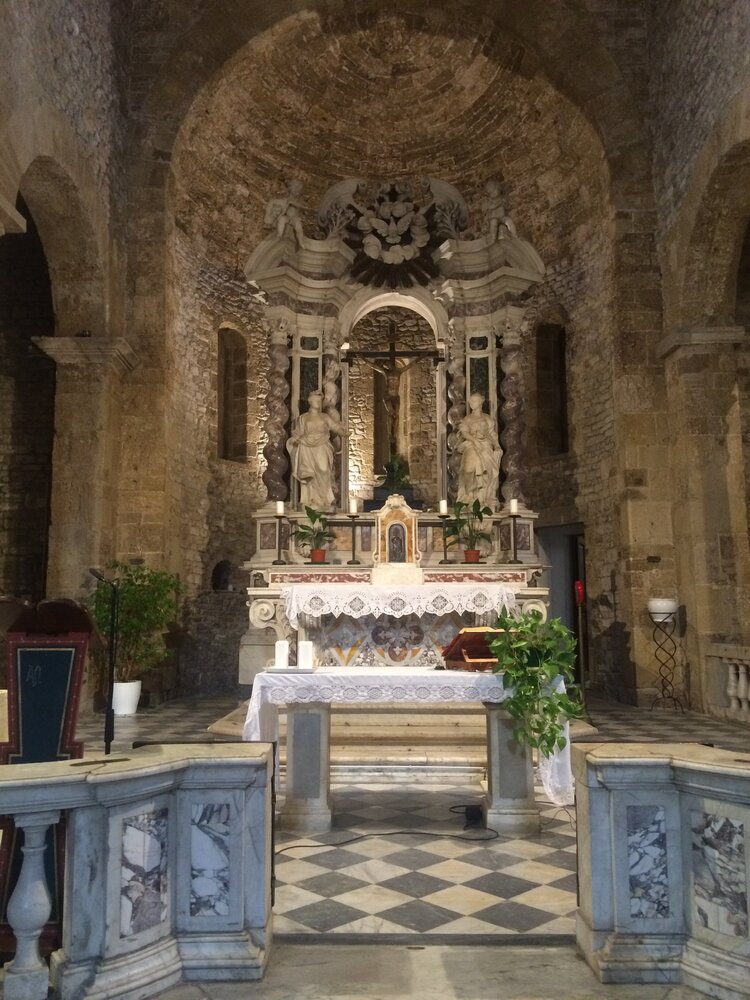
Piazza dei Miracoli (Square of Miracles)
The square opens quite unexpectedly: we just came out of the historical center. It was so ordinary, just from the corner of a building, that it appeared — the falling tower (Torre pendente), aka the bell tower of the Cathedral.
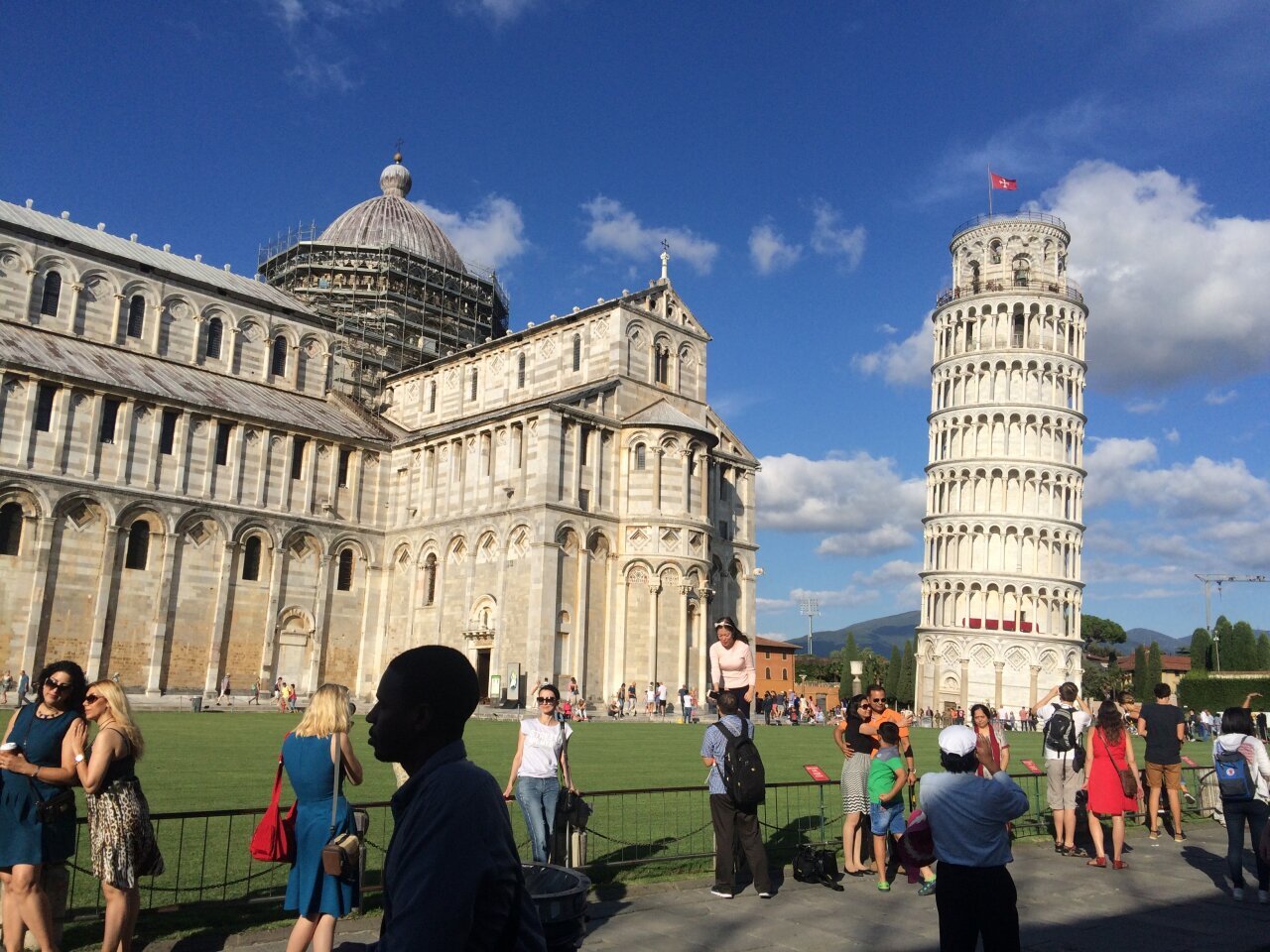
There are a lot of things falling down in Pisa in general. At least two more bell towers in the city. The Cathedral itself is also tilted, as is the Baptistery. Their tilt is not so conspicuous, but if you look closely, you can’t help but notice it. It is not the horizon, but the tower and the cathedral that is blocked in the photo.
There are several legends associated with the Square of Miracles that we know from school. They say that watching the chandelier oscillate in the Cathedral, Galileo formulated the theory of the pendulum, and throwing a bullet and a cannonball from the top of the falling tower, he formulated the law of universal gravitation. It was also here that he uttered his famous «And yet it does spin».
The ensemble of the square symbolizes the human life cycle: starting from the Baptistery (from baptism), passing through the Cathedral, with which the whole earthly life is closely connected, this cycle ends in the cemetery.
The square was incredibly important to the young ambitious republic, which, in honor of its victory over the Saracens in the naval battle of Palermo, planned to build the largest cathedral in Europe. The decision to place it in a meadow away from the center of city life was caused by the fact that in a cramped medieval city such a place could not be found. The cathedral square had to demonstrate Pisa’s superiority — political, financial and cultural. Each structure of the square has a special meaning: the cathedral and its author founded a unique Romanesque-Pisan style; the baptistery, the largest in Italy, has one of the best acoustics among religious buildings; the bell tower was to have a height of 100 meters — almost 2 times higher than now. What is worth only the legend that the land for Camposanto was brought by the Crusaders from Calvary!
The Cathedral of the Assumption of the Blessed Virgin Mary (Duomo di Santa Maria Assunta) was begun in 1063 under the direction of local architect Busceto di Giovanni Giudice. The main works were completed in 1150. Jeweled arches and columns of light marble create an airy, «toy» perception of the cathedral. The unusual style of the cathedral is due to the fact that Busceto added elements of Norman, Byzantine, early Christian and Arabic architecture to the traditional Romanesque style. The fusion of styles and eras was meant to emphasize the scale of political and commercial ties and the greatness of the maritime republic of Pisa, and to surpass the Venetians, who at the same time were building St. Mark’s Cathedral and also tried to mix a variety of styles in it.
Today, the cathedral houses the relics of St. Ranieri, the patron saint of Pisa, and several relics from the Crusades — the relics of St. Abibo, St. Gamliel and St. Nicodemus. There is also the tomb of the Holy Roman Emperor, Henry VII, and before the fire of 1595 there was the tomb of Pope Gregory VIII. In the wall of the cathedral to the left of the entrance is buried its architect.
Immediately after the cathedral, construction began on the Baptistery of St. John the Baptist (Battistero di San Giovanni), or baptistery (1152—1363). It is the largest baptistery in Italy. The height of the building is 54.86 meters, the length in circumference is 107.24 meters, and the diameter is about 39 meters. Originally there was a spherical opening in the roof, as in the Roman Pantheon. The conical dome in Gothic style was «put on» by Nicola Pisano and his son Giovanni a little later, at the end of the XIV century.
Like all great religious buildings, the architecture of the Baptistery is very symbolic: the 12 columns in the interior symbolize the apostles; the baptismal font has an octagonal shape, which corresponds to the eighth day not created by God, and three steps, which symbolizes the Holy Trinity. The pulpit of the baptistery is widely known among art historians for being considered the first masterpiece of the Renaissance.
The bell tower was begun to be built in 1173—1174, its style echoing the design of the Cathedral. Problems with the erection began at the beginning of construction: due to the instability of soft soils, the tower «twisted» and its southern part sagged. The construction of the bell tower was suspended and resumed several times, despite the increasing tilt of the building, until in the middle of the XIV century, finally, the bells were put on it. In 1372, at the time of completion of all works, the slope of the tower was already 1.43 meters. The tower continues to «fall» even today. All attempts to fix it give only temporary results. Engineers strengthened the foundation with liquid cement, removed part of the soil from under the foundation, stretched steel cables — all this helps to briefly delay the fall or even reduce the tilt, but does not stop the fall. At the end of the twentieth century, after the removal of part of the soil, it was possible to return the tower to the angle of inclination of the 1700 level. The height of the tower is 58 m, the inclination from the vertical is already about 5 m.
Thousands of tourists every day try to support the tower and drop it, not in reality, but in memorable photos. Police officers are on duty near the dazzling green lawn and prevent barbarians from trampling on this landscape masterpiece.
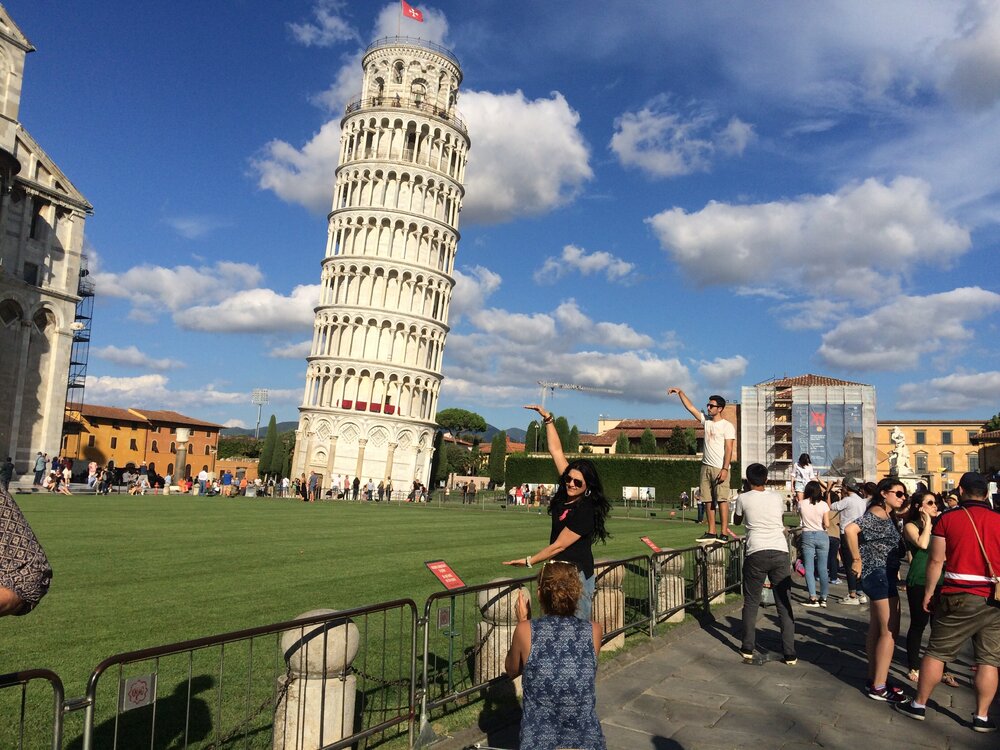
The city with which the names of the great mathematicians and physicists Fibonacci, Galileo, Antonio Pacinotti, Bruno Pontecorvo, Enrique Fermi are closely connected cannot do without a quest, for example, a visit to the Cathedral. The thing is that the entrance to the Cathedral is free, but. you have to get a ticket from the ticket office across the street. This ticket has a time written on it when you can go inside, and it’s unlikely to be anytime soon. In late September, when the tourist traffic is already starting to dwindle, we were given a time to visit in a little over an hour. If you really want to get inside, you’ll have to pass the wait at the nearest cafe, lawnside photo shoot or tourist store. Or you have to go to the ticket office first thing, and only then quietly explore the square while waiting in line for the Cathedral. We didn’t have the patience and missed our turn.
The ensemble of the square ends with the covered cemetery Camposanto Monumentale (1278 — 1464). In the 14th century, a large number of Roman sculptures were brought to decorate the cemetery, which, together with the masterpiece sarcophagi, formed one of the largest European collections of neoclassical art and served as inspiration for many generations of masters. The walls of the cemetery were covered with frescoes from the fourteenth to seventeenth centuries, but during World War II a fire damaged all the frescoes and they are still being restored.
This is what Pisa tried to personify its ambitions, what it dreamed of surpassing its neighbors with: the grandest cathedral of its time. And it’s so important to this day that Piazza del Duomo is still the best-kept, most luxurious part of the city today. The city’s efforts to keep the center of attraction for tourists from all over the world are evident here: the marble of the buildings is kept dazzling white and the lawn bright green no matter the season.
We snickered at the Asians hugging the tower, took pictures of ourselves, bought a postcard at the highest price in town, and exited the square through the west gate of Porta Nuova.
In the evening we returned to the Square of Miracles: guidebooks often promise that after sunset the cathedral and the tower are illuminated especially beautifully and the square becomes cozy. On our visit there was no wonderful illumination, the ensemble was illuminated rather sparingly.

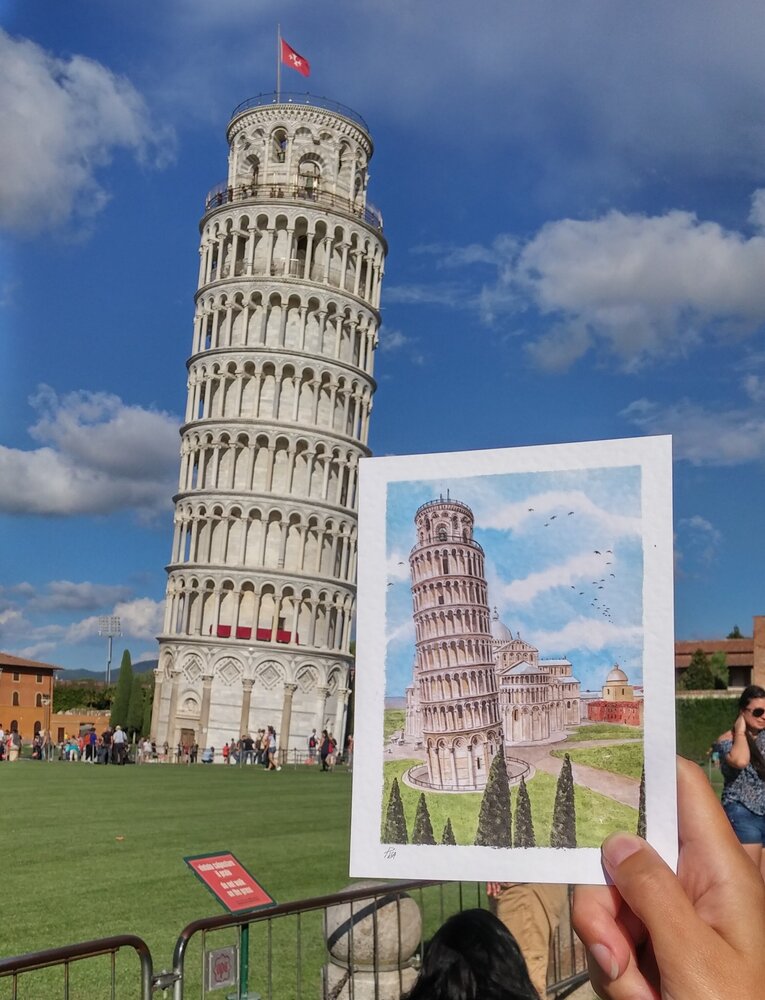
Where to eat in Pisa
In Italy at 14:00—15:00 all restaurants and trattorias close. Only bars, gelaterias and pastry shops are open until 18:00. Sometimes you can have a sandwich in them, but something more serious — only in the evening, when establishments for aperitifs — drinks and light snacks — begin to open.
If you want a delicious Italian dinner in Pisa, you should not sit down in the restaurants along Corso Italia and even more so at Piazza del Miracle — these are the most touristy places, with complex «tourist menus» and menus in all world languages. But they don’t close for siesta.
We usually look for places where locals go. After an hour and a half of wandering around the alleys on the principle «as far away from the center as possible», in one of the dead ends we found a secluded place, obviously popular among locals. The next day, in the same way, in an unremarkable alley, we found a place with good pasta. Look for places away from the center if you want to eat something tasty.
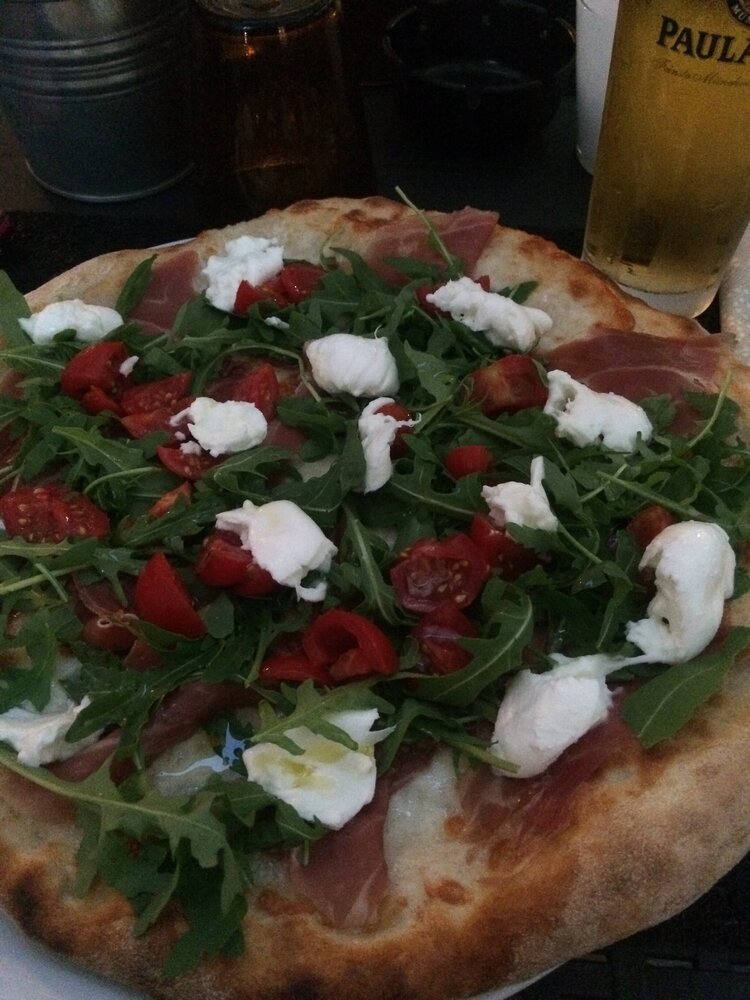
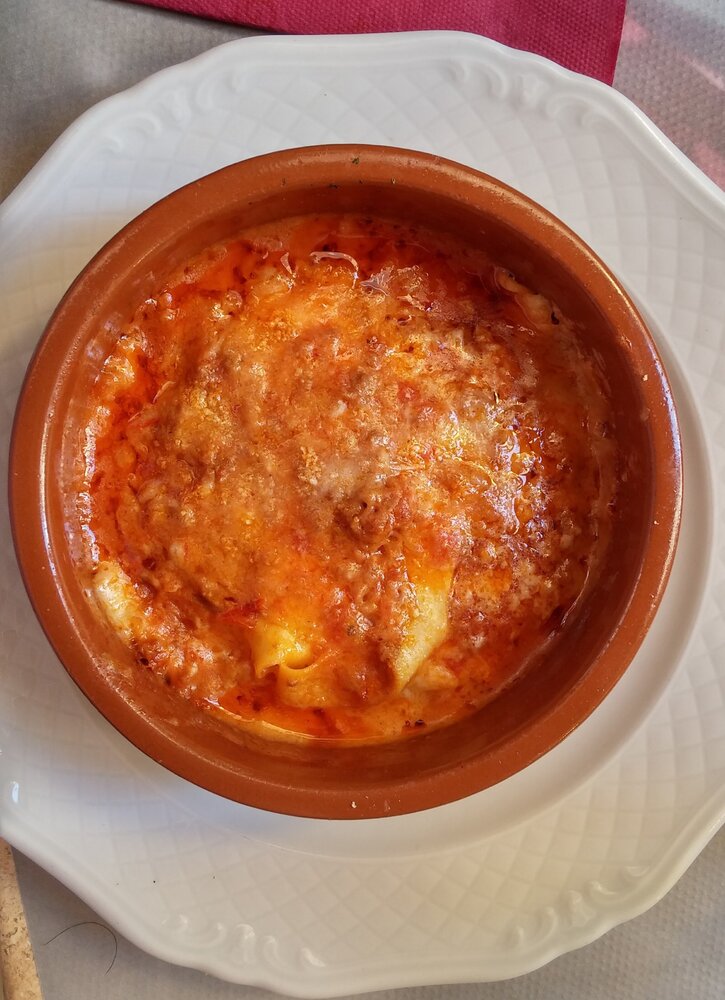
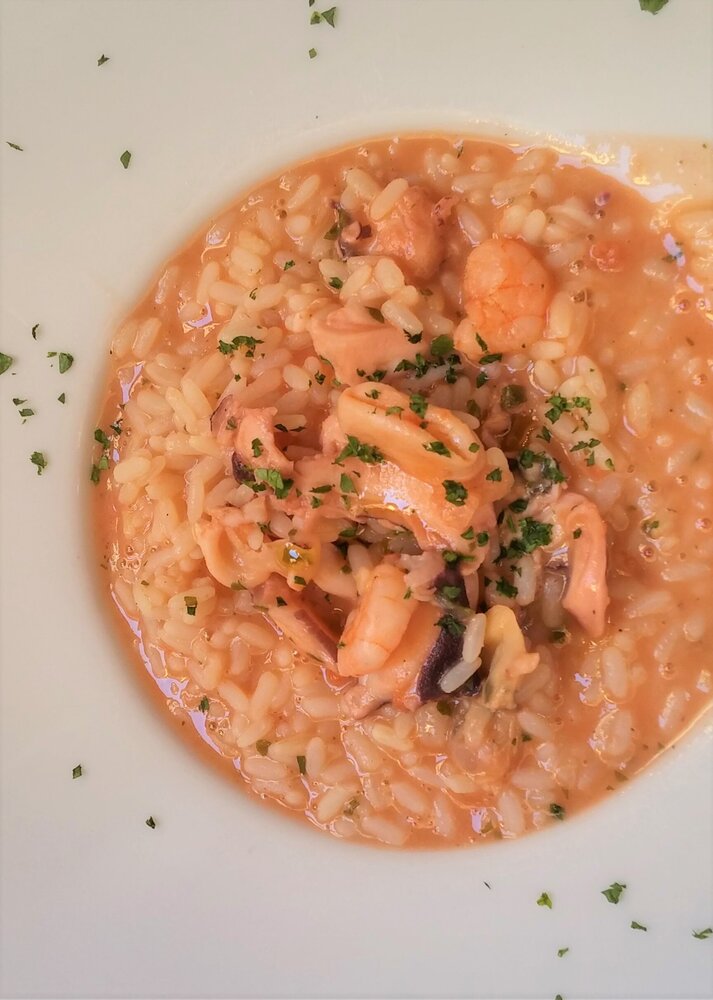
We did not like Pisa on the first day. Once it was a major maritime power, very rich, claiming supremacy in the sea, politics and culture. Today, only the Square of Miracles and a few churches scattered haphazardly around the city remind us of its former ambitions. The city did not make a coherent impression, it seemed like an applique of unconnected fragments, and the Piazza of Miracles seems to mean to Pisa what an old lady means to her jewelry from her distant youth, and Pisa is as careful to protect her treasures as she is to ignore everything else. On the evening of the first day, it seemed to us that we had merely «ticked off» the list of places to «visit» in order to «see with our own eyes» what we had known since childhood from pictures in textbooks.
On the second day, Pisa still had a chance to please us — and it made up for the first impression. What to see in Pisa besides the falling tower.

